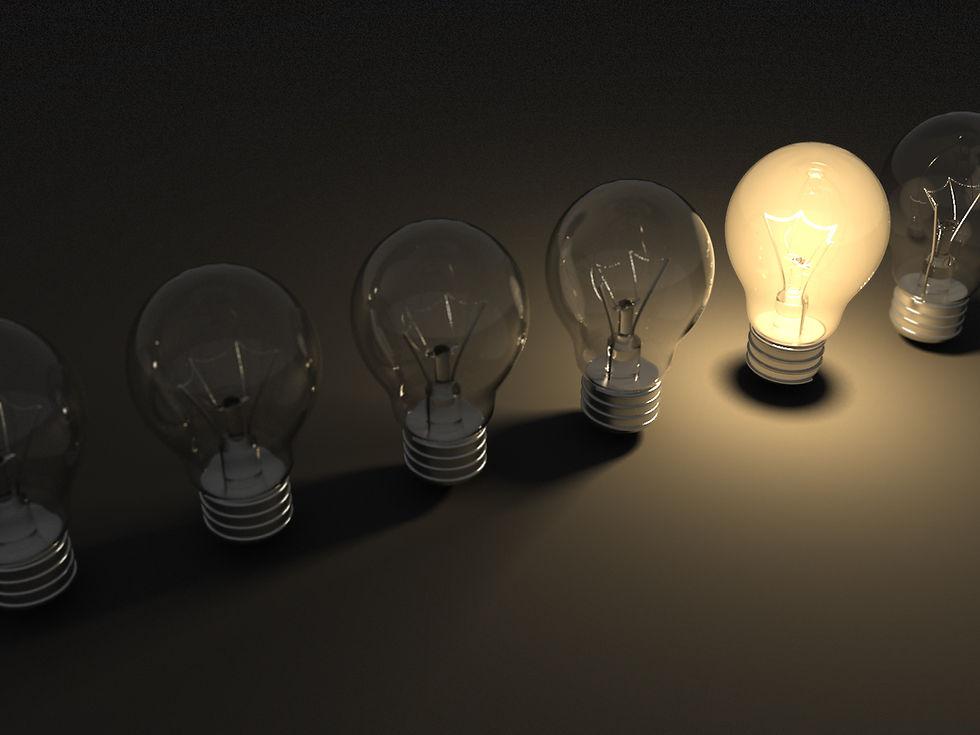[Vision] Think small, focus on 1% improvement, and wait enlightenment
- Dr Takeshi Takama (CEO)

- Aug 6, 2021
- 3 min read

For a couple of days, I've been bombarded with the same kind of questions. And, I felt some are in pain. I've been asked questions like "How can I think big?" and "How can I find an idea that will change the world?" I told them, "Instead of thinking about that, you should think about what you need to do today and record whether you have achieved it or not."
Big, world-changing ideas are like New Year's resolutions - they feel good at the time, but you'll probably stop doing them because you're not sure how you're going to achieve them. Instead, if you think about what you're going to do for the day and then record whether you've achieved it and how you feel, you'll find that you can do more and more. This recording is what our staff at su-re.co do every day before and after work. A 1% improvement will lead to a 10-fold improvement in our ability to achieve in about eight months if we keep doing this.
As you continue to do this, your internal competence will increase your experience and skills. Then suddenly, one day, you will have a revelation from the sky, and suddenly you will be doing something big. In retrospect, that's what you call a vision or a goal, but when you suddenly decide to do this, you do it without thinking about whether you can do it or not. The book I read about willpower is a situation where you're doing something that has a much stronger force than motivation. You may need to jump a bit, but it's much easier mentally to grow your internal capacity and do what you need to do comes naturally.
That's what I meant when I said "Think Small", but I'm not sure if they got it (^^;). Instead of worrying about "why I can't do it" or "why I can't find a big goal", you should keep working on the immediate things and power up your internal abilities. And then, it's easier to wait for a revelation to come to you.
This approach is in line with resilience theory, which is also being used in climate change adaptation. Resilience theory, which appears in this diagram, is a macroscopic diagram of human society. It explains that we create more resilient space by reducing internal social stress and external biophysical stress. This theory is also valid on a personal level, where we reduce our internal stress by increasing the number of things we can do, and we reduce our external stress by not challenging ourselves with goals that are too big. The result will be a larger resilient space that you feel comfortable in. If you are too comfortable, you will not be able to improve, but if you have some room for improvement, you will be able to afford to jump on opportunities when they appear.

When I cycled around Australia, when I did my PhD at Oxford, when I was the sub-chief of the Japanese government's biggest climate change project, when I decided to start my own business in Bali, when I built my tree house, I was building my capacity when I had a revelation or an opportunity. So I had the time and energy to jump at the chance.
Some people may still find it challenging to work persistently. If that's the case for you, try to list five things you did today and score them according to whether you liked them or not, whether you enjoyed them or not. Then you'll naturally do more of the things you enjoyed. This is something I actually do every day in my notebook.

![[Climate change] a risk diffused by trade](https://static.wixstatic.com/media/1cce69_d04d08ad7b664d80916fe84af379f679~mv2.png/v1/fill/w_754,h_280,al_c,q_85,enc_avif,quality_auto/1cce69_d04d08ad7b664d80916fe84af379f679~mv2.png)
![[SDGs] Goals 7 to 12 contributed by su-re.coffee](https://static.wixstatic.com/media/e66db6_8729f60eff8b4c2689cda794205751f0~mv2.png/v1/fill/w_980,h_980,al_c,q_90,usm_0.66_1.00_0.01,enc_avif,quality_auto/e66db6_8729f60eff8b4c2689cda794205751f0~mv2.png)
Comments